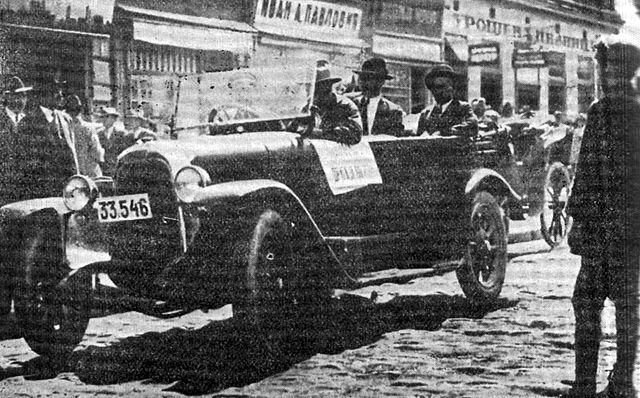League of Communists of Yugoslavia
The League of Communists of Yugoslavia, known until 1952 as the Communist Party of Yugoslavia, was the founding and ruling party of SFR Yugoslavia. It was formed in 1919 as the main communist opposition party in the Kingdom of Serbs, Croats and Slovenes and after its initial successes in the elections, it was proscribed by the royal government and was at times harshly and violently suppressed. It remained an illegal underground group until World War II when, after the invasion of Yugoslavia in 1941, the military arm of the party, the Yugoslav Partisans, became embroiled in a bloody civil war and defeated the Axis powers and their local auxiliaries. After the liberation from foreign occupation in 1945, the party consolidated its power and established a one-party state, which existed in that form of government until 1990, a year prior to the start of the Yugoslav Wars and breakup of Yugoslavia.

Delegates of the First Congress of the Socialist Labor Party of Yugoslavia (Communists), Belgrade, 1919
Delegates of the Second Congress of the Communist Party of Yugoslavia, Workers' Hall, Vukovar, 1920
Plaque in front of modern Hotel Slavija in Slavija Square, Belgrade, commemorating the First Congress of the Socialist Labor Party of Yugoslavia (Communists), which was held in the old Hotel Slavija in 1919
Election campaign of CPY in 1920
Socialist Federal Republic of Yugoslavia
The Socialist Federal Republic of Yugoslavia (SFRY), commonly referred to as SFR Yugoslavia or Socialist Yugoslavia or simply as Yugoslavia, was a country in Central and Southeast Europe. It emerged in 1945, following World War II, and lasted until 1992, breaking up as a consequence of the Yugoslav Wars. Spanning an area of 255,804 square kilometres (98,766 sq mi) in the Balkans, Yugoslavia was bordered by the Adriatic Sea and Italy to the west, Austria and Hungary to the north, Bulgaria and Romania to the east, and Albania and Greece to the south. It was a one-party socialist state and federation governed by the League of Communists of Yugoslavia, and had six constituent republics: Bosnia and Herzegovina, Croatia, Macedonia, Montenegro, Serbia, and Slovenia. Within Serbia was the Yugoslav capital city of Belgrade as well as two autonomous Yugoslav provinces: Kosovo and Vojvodina.
Marshal Josip Broz Tito led Yugoslavia from 1944 to 1980.
Yugoslav ration stamps for milk, 1950
Tito in 1973
U.S.–Yugoslavia summit, 1978








